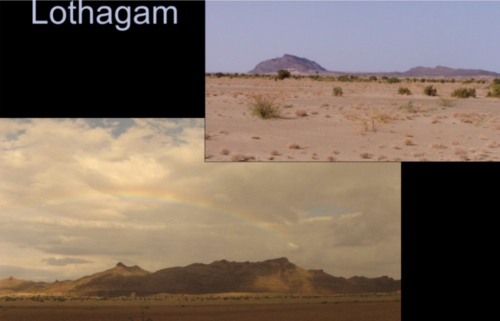
Archaeology often involves extensive surveys before embarking on actual surface collections and/or excavations. Origins Field School students recently took a virtual tour of the Lothagam-Lokam locality on the west side of Lake Turkana, where they explored the research history of the site from 1960s to present. The Lothagam locality is known for its impressive geological formations, especially the red sediment Miocene beds that come into contact with the early Holocene lacustrine deposits. These outcrops are tilted as a result of various tectonic forces.
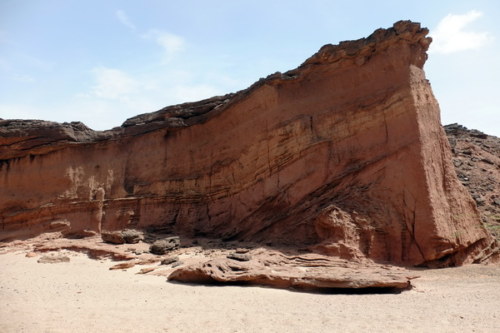
The red Miocene tilted beds at Lothagam. Photo credit: Deming Yang.
Early archaeological research at Lothagam, by Lawrence Robbins, paved the way for current research methodologies and techniques, and Prof. Hildebrand introduced students to his research. As Prof. Hildebrand pointed out, Lothagam would have been an inhabited island at some point during the Holocene. A snapshot of lake fluctuation levels during the Holocene can be seen in the molluscan beds, which would have provided important food resources to ancient inhabitants. A fisher-hunter-gatherer subsistence strategy is evidenced by barbed bone harpoons found at the site. Recent research in the area has uncovered backed stone tool pieces as well as decorated pottery. Students are now virtually acquainted with research in the region.
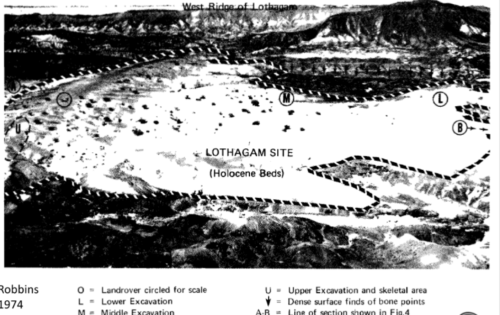
Lothagam in the 1970’s. Courtesy of Lawrence Robbins.
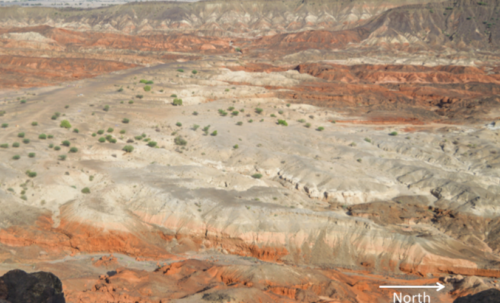
Lothagam site in 2017.
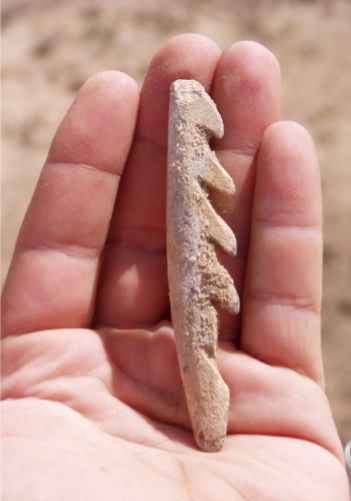
Barbed bone harpoon from Lothagam.
To wrap up the week, Prof. Hildebrand guided the students through sediment characterization. Identifying, describing, and sorting out the differences in layers helps archaeologists understand the deposition mechanism of sediments. Students were assigned a sediment description exercise, where they were to collect any available sediments in their environments, add some water, and try to roll it. Students would later classify the sediments as sand, clay or silt based on how rounded or gritty they were.
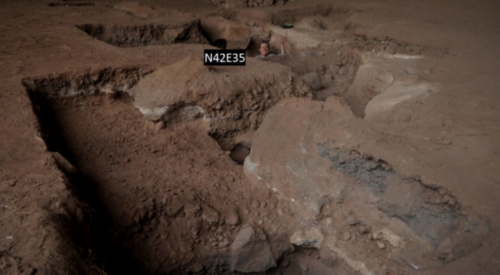
Prof. Hildebrand in one of the excavation trenches. You can see the differentiation in colours of the layers.
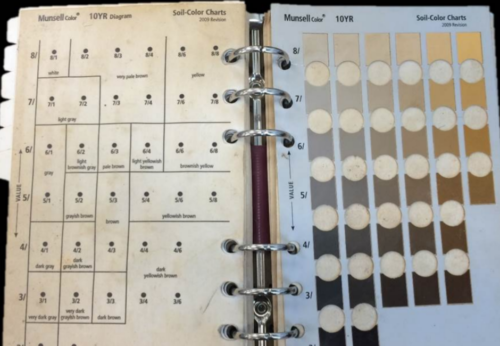
Munsell color system used to characterize sediments.
Stay tuned as we learn about pastoralism and monuments in our last week of the Field School.





